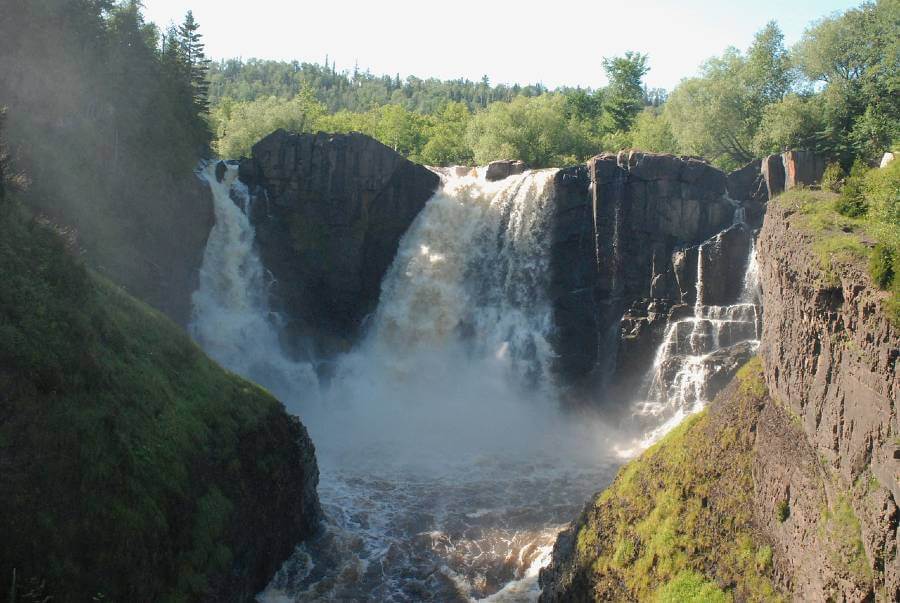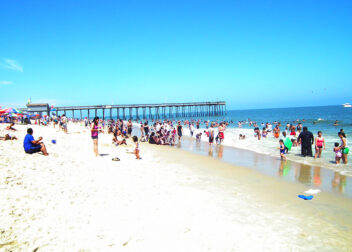Thundering Waterfalls
Ancient Capitals And Thundering Waterfalls
Thundering waterfalls are powerful and awe-inspiring natural wonders that occur when large volumes of water flow over a cliff or a steep drop. They are known for their distinctive roar, created by the force of the falling water, and can be found all over the world.
Some of the most famous thundering waterfalls include Niagara Falls, Victoria Falls, Iguazu Falls, and Angel Falls. They are popular tourist destinations, attracting millions of visitors each year, who come to admire the beauty of the waterfall, hike nearby trails, and participate in recreational activities such as whitewater rafting, fishing, and camping.
In addition to being aesthetically pleasing, thundering waterfalls also play an important role in the ecosystem, providing habitats for plants and animals, and helping to regulate the flow of water in rivers and streams.
If you’re looking for a memorable and awe-inspiring natural experience, visiting a thundering waterfall is a must-see.
Hustai park
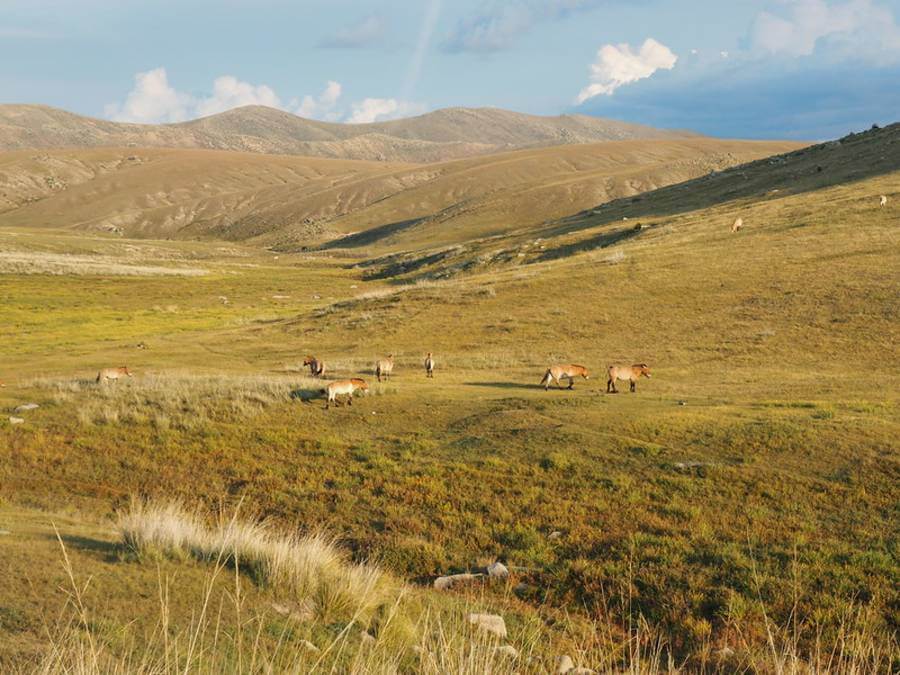
Hustai National Park, which gets its name from the birch trees within the surrounding forests, was once the hunting ground for Mongolia’s last ruler, Bogd Khaan, and later politicians came to the area for the same purpose. But since the park has never been used for farming, nor has it ever been settled, it was the perfect place for the creation of a national park in 1998. While all across Asia these landscapes are being destroyed for agriculture and housing, the Mongolians have always put a lot of effort into environmental protection, and therefore, visitors can find a very undisturbed steppe ecosystem only 100 kilometers outside of Ulaanbaatar in Hustai park.
It is also the place, where the almost extinct Takhi have been reintroduced to their native habitat. The Takhi are also known as Przewalski Horses and were named after the Russian colonel and explorer, who first described them after an expedition to Mongolia during the 1800s. Contrary to some other horses living in the wild, for example, the American Mustangs, the Przewalski Horses aren’t the descendants of domesticated and then escaped animals but remain the only truly wild horses in the world.
Over 300 Takhi now roam the Hustai National Park and the Mongolian scientists have high hopes of expanding their population into other parts of Central Asia. It was amazing to see these stocky horses with the short tails and manes and the trip to this park was actually one of the highlights of my several weeks in Mongolia.
Karakorum and Erdene Zuu
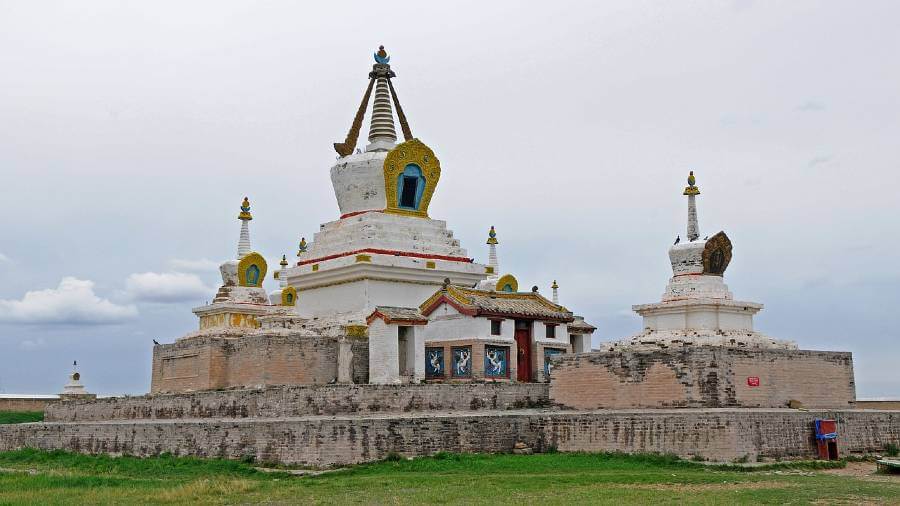
During the rule of Genghis Khan and his successor Ögedei Khan in the 13th century, Karakorum was the capital of the Mongol Empire, the largest land empire in history. Once nothing more than a small ger camp in the Orkhon Valley, the city soon started serving as a base for invasions and subsequently became one of the most important sites in the world. Apparently, a gigantic tree made of silver rose from the middle of the courtyard and expanded its branches into all directions and on the very top sat a trumpet, with which the Khan would call for more drinks. Today, almost nothing is left of the once glorious city. The decline was fast to come and the Karakorum was soon after its rise to glory destroyed by the Ming Dynasty’s troops.
After its decay, it was debated for quite a while, where the long-lost capital was actually supposed to be located and after excavations started in the 1930s, a lot of what was once part of the city had disappeared long ago. Stones from the ancient capital were used in the construction of the Erdene Zuu Monastery, the oldest surviving Buddhist monastery in Mongolia, which is located right next to the excavation site and has come to represent the ancient glory of Mongolia. Apart from several impressive buildings, the monastery is also surrounded by a wall of over a hundred stupas. Inside the monastery’s courtyard, you can find big stone turtles, that are believed to have been ancient Karakorum’s most famous emblems. There is also a museum detailing the Mongol Empire’s conquests and the history of the Karakorum right next door – not only can you learn a lot, but the museum also has great WIFI (an absolute rarity in Mongolia’s countryside)
And the Rest of the Orkhon Valley
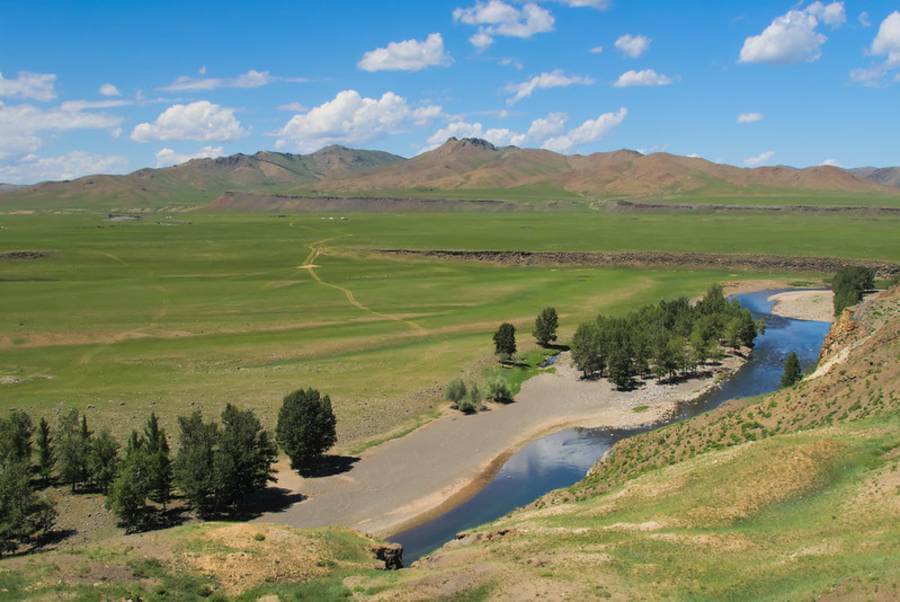
The Orkhon Valley wasn’t only the seat of power in the Mongolian steppes and a center of trade and religion, but apart from housing Khans and capitals, it has always had great significance for Mongolians as a lifeline in an otherwise dry area. The grasslands along the Orkhon River offer great conditions for settlement and the nomads here hold on to their traditional lifestyle to this day, grazing and watering their livestock in the valley. One of the most impressive natural wonders to see in Orkhon Valley is Ulaan Tsutgala – the Orkhon Waterfall. Created long ago by a volcanic eruption, the water of the Orkhon River now thunders down the 20-meter-high waterfall into an almost perfectly circular basin and the adjoining gorge. The waterfall is by far the most impressive thing I have seen in all of Mongolia – truly beautiful.
Activity
There are many activities you can participate in, depending on your interests and the location of the waterfall:
- Hiking: Many waterfalls are located within hiking trails and national parks, allowing you to get a closer look and appreciate the beauty of the waterfall.
- Photography: Waterfalls make for great photo opportunities, so bring your camera and capture some memories.
- Picnicking: Pack a picnic and find a scenic spot near the waterfall to enjoy a meal with a view.
- Swimming: If the waterfall has a pool or basin, you can take a swim and cool off on a hot day.
- Whitewater Rafting: For a more adventurous experience, try whitewater rafting near the waterfall for an exciting day on the rapids.
- Camping: Many waterfalls are located near campsites, allowing you to spend the night and wake up to the sound of the waterfall.
- Wildlife Watching: Waterfalls often attract a variety of wildlife, such as birds and other animals, so bring binoculars and enjoy some wildlife watching.
- Nature Walk: Take a nature walk near the waterfall and explore the surrounding flora and fauna.
- Meditation: Find a quiet spot near the waterfall and use the sound of the falling water to relax and meditate.
Places to visit around Thundering Waterfalls
If you are visiting a thundering waterfall, there are likely many other interesting places to explore in the surrounding area. Some popular places to visit near thundering waterfalls include:
- National Parks: Many waterfalls are located within national parks, allowing you to enjoy the beauty of nature and explore the park’s many hiking trails, picnic areas, and scenic vistas.
- Wildlife Sanctuaries: If you enjoy wildlife watching, consider visiting a nearby wildlife sanctuary to see a variety of animals in their natural habitat.
- Historic Sites: Many areas near waterfalls have a rich history and are home to historic sites and landmarks, such as old mills, covered bridges, and colonial homes.
- Adventure Sports: If you’re an adventure seeker, look for nearby locations that offer activities such as kayaking, rock climbing, and zip-lining.
- Local Markets: Visit local markets to sample regional cuisine and purchase handmade goods and souvenirs.
- Wineries and Breweries: Many areas near waterfalls have thriving wine and beer industries, offering tastings and tours of local vineyards and breweries.
- Art Galleries: If you have an interest in art, visit local galleries to see the works of regional artists and artisans.
- Museums: Learn about the history and culture of the area by visiting local museums and historical societies.
How to reach
The best way to reach a thundering waterfall depends on the location and your personal preferences. Here are some common modes of transportation:
- Driving: If you have access to a car, you can drive to the waterfall. This allows for the most flexibility and freedom to explore the surrounding area at your own pace.
- Public Transportation: Many waterfalls are accessible by bus or train, making it an easy and affordable way to reach your destination.
- Fly: If the waterfall is located far from your starting point, you can fly to the nearest airport and then rent a car or take public transportation to reach the waterfall.
- Hiking: If the waterfall is located within a hiking trail, you can hike to it as part of a longer trek or backpacking trip.
- Bike: If you enjoy cycling, consider biking to the waterfall. This is a great way to enjoy the scenery and get some exercise at the same time.
Regardless of how you choose to reach the waterfall, it’s always a good idea to check the local transportation options in advance and plan your trip accordingly.
FAQ
Sure! Here are some commonly asked questions and answers about thundering waterfalls:
Q: Can I swim in a thundering waterfall?
A: It depends on the waterfall and local regulations. Some waterfalls have pools or basins where swimming is allowed and safe, while others are too dangerous for swimming. Always check with local authorities before entering the water.
Q: Can I hike to a thundering waterfall?
A: Yes, many thundering waterfalls are located within hiking trails and national parks, making them accessible to hikers. Hiking to a waterfall can be a great way to experience the beauty of nature and get some exercise at the same time.
Q: Are there any safety precautions to consider when visiting a thundering waterfall?
A: Yes, it’s important to be aware of the potential dangers when visiting a waterfall. These can include slippery rocks, strong currents, and sudden changes in weather. Always follow posted safety guidelines and use caution when exploring the area.
Q: Can I camp near a thundering waterfall?
A: It depends on the location and local regulations. Some national parks and camping grounds offer campsites near waterfalls, while others may have restrictions on camping in the area. Always check with local authorities before setting up camp.
Q: Are there any fees for visiting a thundering waterfall?
A: It depends on the location and the type of access you require. Some waterfalls are free to visit, while others may require a park entrance fee or a fee for access to certain facilities. Check with local authorities for more information.

